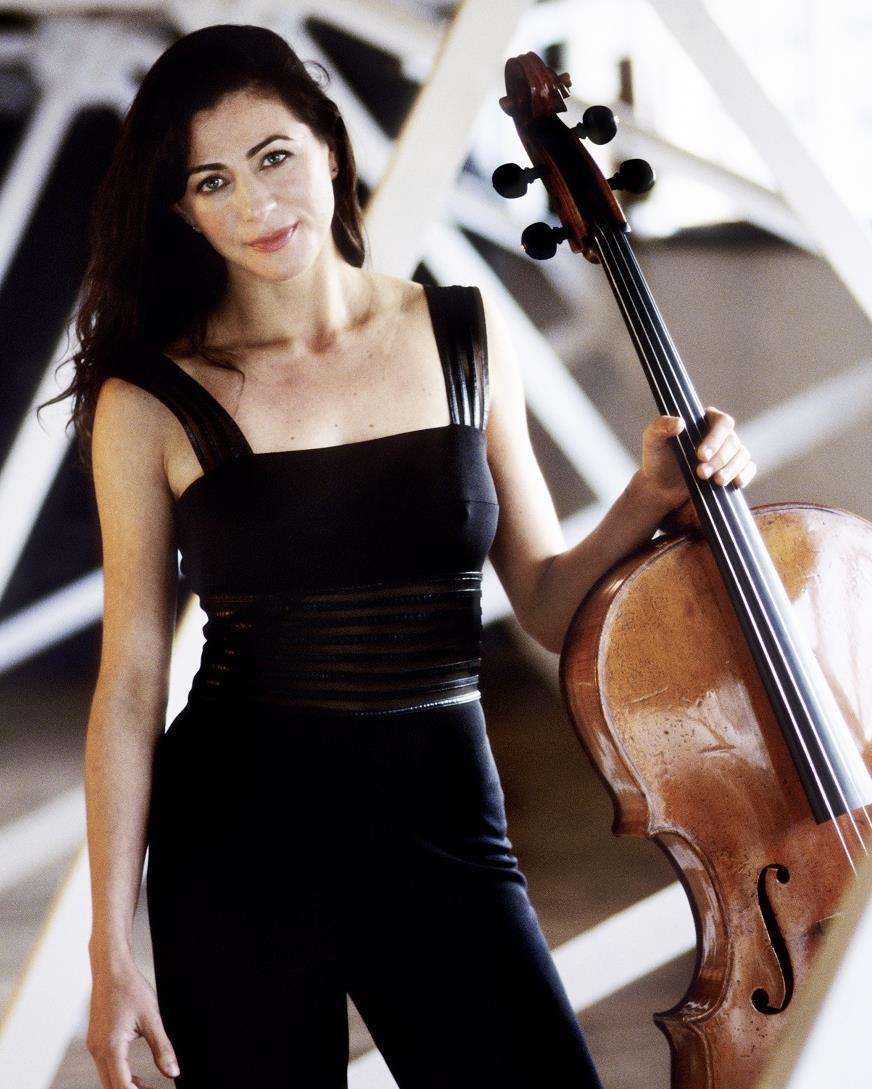The great cello repertoire all started with JS Bach and his six suites of dances – that is unless you believe his second wife Anna Magdalena wrote them. In particular you could argue that it all goes back to the first of the suites, the iconic G Major set with its majestic and instantly recognisable prelude.
But there was another enormous influence on the 20th-century repertoire, the Russian maestro Mstislav Rostropovich, whose playing inspired works by both Dmitri Shostakovich and Benjamin Britten, and these twin elements were neatly tied together in a compelling recital by British cellist Natalie Clein, accompanied by the enormously talented young Brisbane pianist Alex Ranieri.
 Cellist Natalie Clein. Photo © Sussie Ahlburg
Cellist Natalie Clein. Photo © Sussie Ahlburg
The 40-year-old Clein’s first big break came at the age of 16 when her performance of the Elgar Concerto earned her the BBC Young Musician of the Year award and the inevitable plaudits as “the new Jacqueline du Pré”. She is currently artist in residence and director of musical performance at Oxford University, and is in such demand internationally that she hadn’t had a chance to check the programme for her appearance in the Utzon Series, so there was a change of running order.
Instead of starting off with the first Bach suite she opened with Signs, Games and Messages, three miniatures by contemporary Hungarian composer György Kurtág, which he and his wife Marta often perform alongside excerpts from the Bach suites. If one hears faint echoes of the old master – especially in the dramatic Az hit (Faith), a solo cello setting of one of Kurtág’s songs – he also pays homage to another hero of his, American avant-garde bête noire John Cage, although the economy of content owes as much to Anton Webern.
Britten asked Rostropovich to perform all six of the Bach suites before sitting down to pen his own Cello Suites in the 1960s. He had met the great Russian with Shostakovich, and the three men struck up a strong friendship. As well as the three Suites, Rostropovich was the dedicatee for the Sonata for Cello and Piano Op. 65. Clein and Ranieri combined powerfully for this five-movement work, at the heart of which is the Elegia in which the slow tread of the piano builds to a momentous climax behind the impassioned cello lines. This mood is dissipated by a rather bumptious march – again nicely executed – before Clein’s bouncing bow went into overdrive for the Moto Perpetuo finale.
Clein’s reading of the Bach Suite which followed was finely judged. The broad sweep of the Prelude opens out to an elegant Allemande and skipping Courante before slowing to the graceful lines of the Sarabande, to which Clein brought a lovely singing quality and carefully shaped grace. The two Menuets were dispatched with a distinctive swing and swish before the stomping gigue brought the work to a satisfying close.
Clein’s intense involvement with the music and her infectious stage presence were no better demonstrated than in the last work on the programme, Shostakovich’s Sonata for Piano and Cello was composed in 1934 when the Soviet regime was tightening the screws on its artists. Shostakovich “purified” his approach, producing a long first movement exploring the sonata form. Clein and Ranieri showed great chemistry throughout the four movements, no mean feat when they can’t have played together live many times before.
For an encore Clein chose a solo cello work by the late John Taverner, with whom she worked closely over the last years of his life. The piece, an arrangement of a Russian Orthodox prayer, brought this excellent recital to a serene and moving close.











Comments
Log in to join the conversation.